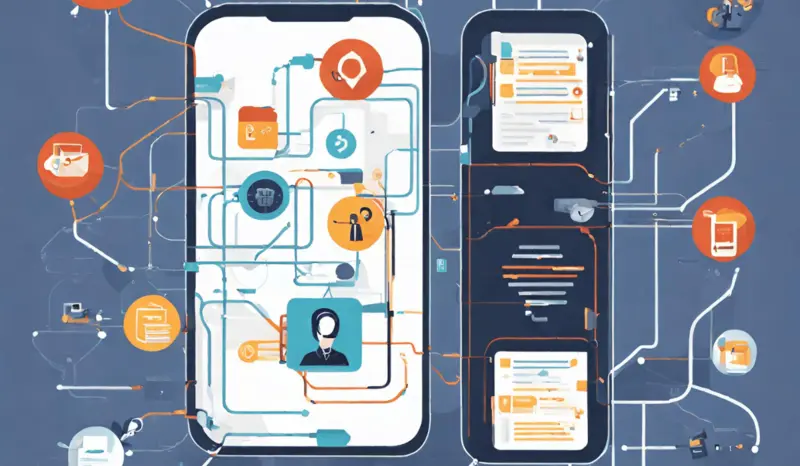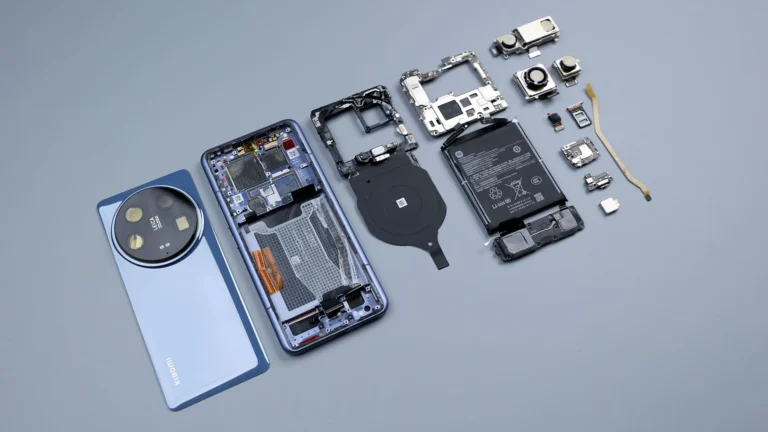Quick Links
Smartphone Security 2025
Today’s hyper connected world smartphones aren’t just communication devices they are mini computers carrying the most sensitive pieces of information about each one of us, from personal details to banking information and private conversations. Looking ahead to 2025 the smartphone security landscape is moving at a pace that keeps changing both the challenges and the innovative solutions that can be used to keep your data safe. In this all inclusive blog, we take a look at current smartphone security trends, emerging threats and actionable strategies to keep your data safe through 2025.
Why Smartphone Security Matters?

Rise of Smartphones
More than 6 billion smartphone users worldwide cannot be wrong. They have literally become a part of our lives. From online banking to social networking for virtually all our online activities that require personal and financial information about us we rely on smartphones. Cybercriminals have targeted them as their first choice since they hold all this sensitive information.
Financial Consequences of Data Breaches
According to IBM a recent study indicates that the mean cost for an information breach in 2023 amounts to approximately $4.45 million. Whenever smartphones become one of the central storages of such sensitive information the exploitation of an information breach can be totally devastating, involving financial loss, identity theft, and being left with a ruined reputation forever.
Trends Currently Affecting Smartphone Security
As we look forward to 2025 there are quite a number of trends influencing the landscape of smartphone security.
What is biometric security on phone?

Modern smartphones use biometric authentication like fingerprint scanning and facial recognition. With such greater security than traditional passwords, there is less leeway for unauthorized usage to be allowed to those who may attempt to use your device. Within five years, we will be seeing very advanced biometric systems in the form of voice recognition and behavioral biometrics that scan patterns of behavior to identify suspicious action.
Artificial Intelligence and Machine Learning
AI and machine learning are in line to rule more and more security aspects of cybersecurity components. AI could watch vast amounts of data to discover strange patterns or vulnerable areas to serious threats and attacks in real-time. The solutions about AI-driven security solutions will be more advanced by 2025, enabling proactive identification and mitigation of risks before they escalate into serious breaches
End-to-End Encryption
Only the sender and the recipient can read messages exchanged between them as a result of end-to-end encryption. Due to the rapid growth in privacy issues, even more messaging apps and platforms are including end-to-end encryption as a default feature. It will continue to increase and help prevent sensitive information from unauthorized access.
Software Updates and Patches
The security of smartphones will largely depend on the installed software being regularly updated. In 2025, the various smartphone makers will focus on faster updates and patches in resolving vulnerabilities in security features. Users will have to take it upon themselves to keep updating their devices regularly to achieve these updates.
Zero Trust Security Model
The Zero Trust model of security is based on the premise that no one inside or outside the network shall be trusted by default. The concept is hugely growing in enterprise environments and will have an influence on the smartphone security too. This year, we will see continued growth in the adoption of smartphones embracing Zero Trust principles, with continuous verification of users and devices.
What are the emerging security challenges?

While the functionality of phone security is increasing day by day, so are the new threats. Let us first see which of these threats are the most significant regarding data protection.
Malware and Ransomware
Malware, which includes ransomware, has been one of the main causes of some serious threats to smartphone security. In such an attack, ransomware encrypts a user’s data and makes a demand for money for the release. By 2025, malware will develop further sophistication, thus explaining why security software must be installed on the user’s device for maximum protection.
Phishing Attacks
Phishing hacking involves manipulating users into furnishing sensitive information, such as passwords or credit card details, through spammy emails or messages. As hackers advance in making scams more convincing and real, it is important that users be enlightened on the dangers of phishing and educated on identifying phishing attempts.
Risks of Public Wi-Fi
Important dangers of use of public Wi-Fi networks include man-in-the-middle attacks and eavesdropping. As the number of people using public networks is set to increase by 2025, their awareness of risks and protection measures may be more necessary than ever.
IoT Vulnerabilities
The Internet of Things, or IoT, has really raised the bar for devices that can be accessed through a phone. Hyper-connectivity means that it brings its risks; one weak link in one of the devices can compromise the whole network. Users will do well to remember their IoT devices by 2025 in relation to security risks.
Best Practices for Protecting Data in 2025
Users are using various best practices to counter risks and protect their smartphones from hacking in 2025.
Use Strong Unique Passwords
Using strong, unique passwords for every different account is one of the basic security practices. Instead of making impossible-to-remember complexity for each password, password managers can generate and store them; they have lower chances of repeating a password and simplify the management of many accounts.
Enable Biometric Authentication
You are adding biometric authentication and hardening security even more. Modern smartphones can read prints and use face recognition to lock down the system from unauthorized access attempts by people.
Upgrade Your Software
Update your smartphone’s operating system as well as your applications to avoid known attacks. Utilize the automatic update configuration so you’re always getting the latest security patches when they become available.
Avoid Public Wi-Fi
Public Wi-Fi networks are available in public places like coffee shops, hotels, airports, etc. While using public networks of Wi-Fi, think of making a Virtual Private Network (VPN) or encrypt the internet connection, which will provide protection of your data from the probable threats. Avoid visiting sites that contain sensitive information like online banking while using public networks.
Know What is Phishing
Be aware of the common phishing scams and learn to identify spam emails, messages, and links. Verify the identity of the sender before clicking links or providing personal data.
Install Security Software
Invest in secure software that detects malware, scans in real-time, and filters websites. It will notify you of threats earlier so that malware can be removed before it takes control of your computer.
Regularly Backup Your Data
Back up your data regularly so that you can retrieve the information in case of a security breach or a crash of devices. You will use the cloud services and external storage devices to store your data securely and access it everywhere.
Examine Application Permissions
Before you download any application, look at the permissions that will be requested by the application. Only install applications that require access to information that is not necessary for them to perform their designated functions, like contacts or location data.
Enable Two-Factor Authentication
Turn on two-factor authentication (2FA) wherever possible. This is the kind of additional security that requires you to verify yourself beyond a simple password, such as a code sent to a mobile phone via SMS.
Check Your Accounts Periodically
Check bank and credit card statements regularly for any suspicious transactions. Report suspicious transactions to your financial institution immediately.
Manufacturers in Smartphone Security
Manufacturers are crucial to smartphone security as they implement robust security features and ensure timely updates. To reach 2025, the following are essential practices that have to be undertaken
Security by Design
From the design point of view, the smartphone manufacturers need to place security top, including secure boot processes, hardware-based encryption, and tamper-proof designs ensuring safety against physical attacks.
Timely Updates and Patches
The manufacturer has to be open and willing to continuously develop software and security patches. The user should be adequately informed of when he or she requires the upgrade of his device and possible implications that could arise from failure to update his devices.
Collaborate with Cybersecurity Experts
Manufacturers should seek the involvement of their cyber experts in scouring for vulnerabilities and then developing and implementing more efficient countermeasures. This collaboration will assist in establishing a safer smartphone system.
Joining the Smartphone Security Future
Importance of Smartphone Security As the clock ticks toward 2025 emphasis on smartphone security cannot be more vital. Such threats are getting sophisticated, and novel technologies incorporating new elements surface all the time which users must know about and proactively act to secure their data. Best practices up-to-date security features, and awareness about upcoming trends can make a huge difference in smartphone protection along with secret and sensitive information in them.
At Cell Zone Shop we well realize that security on smartphones is of the utmost importance we commit ourselves to keeping our viewers up-to-date with any recent information about delivery products in order to help keep their device protected. As the world of smartphone continues to evolve, we will maintain a position of innovation and education, arming our users to advance confidently in this digital world.
Keep learning keep safe and upgrade to future-proof smartphone technology. Data belongs to the best protection possible. Follow for more blogs on new latest mobile Technology visit Cell Zone or facebook.



